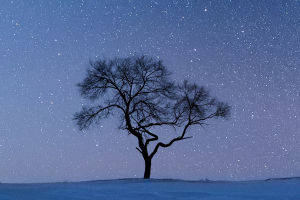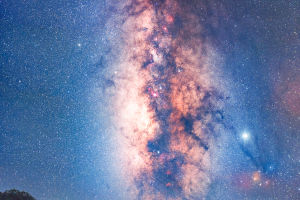When you gaze up at the night sky and notice an unusually bright star near the moon, you might wonder: What is that star?
In most cases, this dazzling point of light is Venus. Venus is the brightest celestial body in the night sky after the moon, and its brilliance often leads to its mistaken identity as a peculiar phenomenon.
But why is Venus so bright? Let's explore the reasons behind its extraordinary luminosity.
The Proximity of Venus to Earth
One primary reason for Venus's brightness is its proximity to Earth. Venus is Earth's neighbor, located within the Earth's orbit. The closest distance between Venus and Earth is approximately 40.5 million kilometers.
This closeness is a significant factor contributing to Venus's visibility in our sky. However, the brightness of Venus is not at its peak when it is nearest to Earth.
Why isn't Venus the brightest when it is closest to Earth? The explanation lies in the orbital mechanics of Venus and Earth around the Sun. When Venus is positioned directly between Earth and the Sun, it is indeed closest to us.
However, during this alignment, the side of Venus facing Earth is in shadow, and Venus is near the Sun from our perspective. The intense sunlight makes it challenging to see Venus against the bright sky.
So, when is Venus the brightest? Venus reaches its peak brightness about 30 days after it is closest to Earth. At this point, Venus has moved sufficiently away from the Sun's glare, and we see a larger portion of its illuminated side.
This phase is known as the "greatest elongation," where Venus shines brilliantly in the early morning or evening sky.
Venus: A Large and Reflective Planet
The second reason for Venus's brightness is its size. Venus is one of the four terrestrial planets in the solar system, and it is second only to Earth in terms of mass and volume.
With a radius only 300 kilometers smaller than Earth's, Venus boasts a substantial surface area that reflects sunlight. Larger objects are easier for our eyes to detect, which is why Venus appears so prominent.
Venus's ability to reflect sunlight is further enhanced by its atmosphere. The planet is shrouded in a dense atmosphere composed mainly of carbon dioxide, with clouds of concentrated sulfuric acid. This thick atmospheric layer reflects about 75% of the sunlight that strikes it back into space.
The intense reflectivity of Venus's clouds contributes significantly to its brightness. The visibility on Venus's surface is less than 3 kilometers due to the thick clouds, yet from our vantage point, this reflective capability makes Venus one of the most luminous objects in the night sky.
This high albedo (reflectivity) is why Venus is often referred to as the "evening star" or "morning star."
The Spectacular Encounter: Venus and the Moon
The celestial event known as the "conjunction" occurs when Venus and the moon appear close together in the sky. These conjunctions typically take place at dusk or dawn, offering a stunning visual treat for stargazers.
Due to its intense brightness, Venus stands out dramatically next to the moon, often causing people to mistake it for an unusual astronomical phenomenon.
Conjunctions are not just visually captivating but also hold scientific interest. They allow astronomers to study the relative positions and motions of celestial bodies, enhancing our understanding of planetary dynamics.
For amateur astronomers and casual observers alike, a conjunction of Venus and the moon provides an excellent opportunity to appreciate the beauty and complexity of the night sky.
Conclusion
The next time you see that bright star near the moon in the night sky, remember that it is probably Venus. This dazzling planet, the brightest in the night sky, is not only captivating but also scientifically significant.
Whether observed through a telescope or studied by space probes, Venus offers a unique window into the mysteries of the solar system. As more exploration missions are conducted, our understanding of this fascinating planet will deepen.


